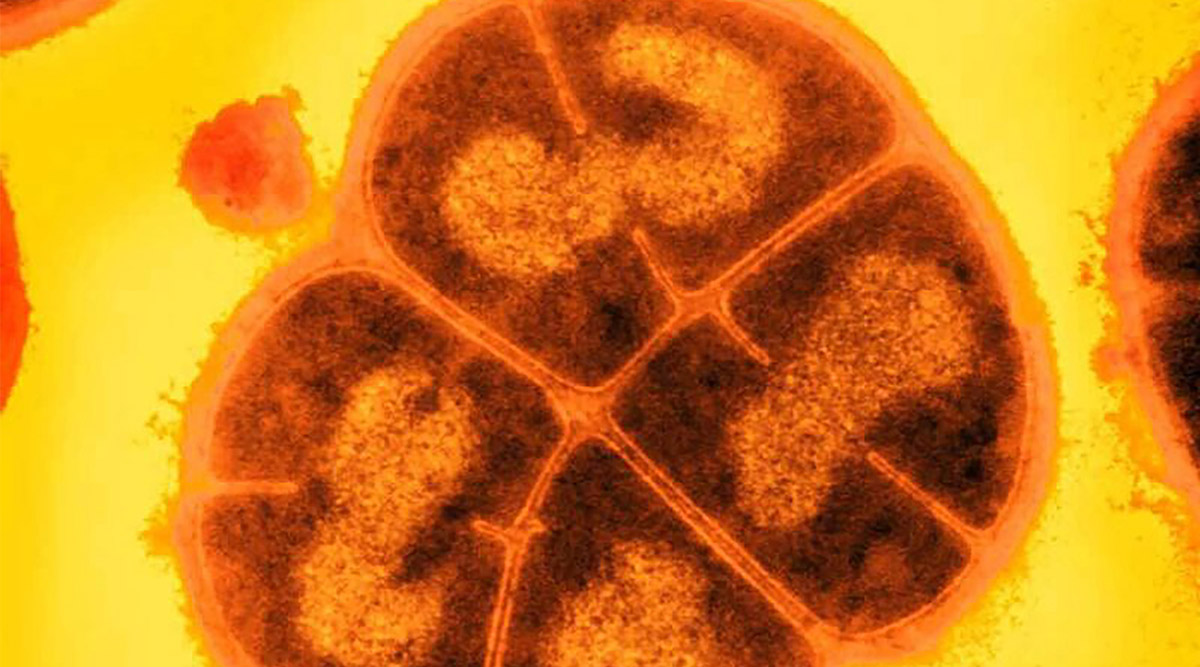 D. radiodurans (affectionately known as "Conan the Bacterium") is particularly well-suited to surviving Mars' harsh environment. (Image credit: Northwestern University)
D. radiodurans (affectionately known as "Conan the Bacterium") is particularly well-suited to surviving Mars' harsh environment. (Image credit: Northwestern University)In a new study that simulated the harsh ionising radiation on Mars, researchers found that ancient bacteria could survive close to the surface of the red planet much longer than previously assumed. This means that scientists should be on the lookout for ancient bacteria and bacteria remains when the first samples from Mars come back to Earth.
These findings open up the possibility that if life ever evolved on Mars, we might be able to detect its biological remains in future missions, like EcoMars (Rosalind Franklin rover) and the Mars Life Explorer, which will drill two metres below the planet’s surface to look for life.
Also, the fact that certain strains of bacteria can survive Mars’ harsh environment means astronauts and space tourists could accidentally contaminate Mars with the bacteria they bring along with them.
Simulating harsh conditions on Mars
Mars has an extremely harsh environment which by all means should be inhospitable to life. The planet is arid and temperatures average minus 63 degrees at its mid-latitudes. To make things worse, the planet is also constantly blitzed by intense galactic radiation and solar protons.
“Our model organisms serve as proxies for both forward contamination of Mars, as well as backward contamination of Earth, both of which should be avoided,” said Michael Daly, who led the study published in the journal Astrobiology. Daly is a professor of pathology at the Uniformed Services University of the Health Sciences (USU) and a member of the National Academies’ Committee on Planetary Protection.
“We concluded that terrestrial contamination on Mars would essentially be permanent — over timeframes of thousands of years. This could complicate scientific efforts to look for Martian life. Likewise, if microbes evolved on Mars, they could be capable of surviving until the present day. That means returning Mars samples could contaminate Earth,” added Brian Hoffman of Northwestern University. Hoffman is a senior co-author of the study.
To study whether life could survive in the harsh conditions of Mars, Daly, Hoffman and the rest of the research team first established the ionising radiation survival limits of microbial life. After that, they exposed six different terrestrial bacteria and fungi to conditions similar to Mars’ surface. They did this by freezing them and hitting them with gamma rays and protons.
Life on Mars
Based on these simulation tests, the researchers concluded that some terrestrial microorganisms might be able to survive on Mars over hundreds of millions of years. One particularly robust microbe, called Deinococcus radiodurans, seemed particularly well-suited to living on the red planet. During the experiment, this bacterium survived massive amounts of radiation while frozen.
The researchers attribute this impressive hardiness of the bacterium to its genomic structure. Deinococcus radiodurans’s chromosomes and plasmids are linked together, which keeps them in perfect alignment and ready for repair after intense radiation.
This means that if a similar microbe evolved on Mars when the planet still had water, some of its remnants could still be dormant under the Martian surface.